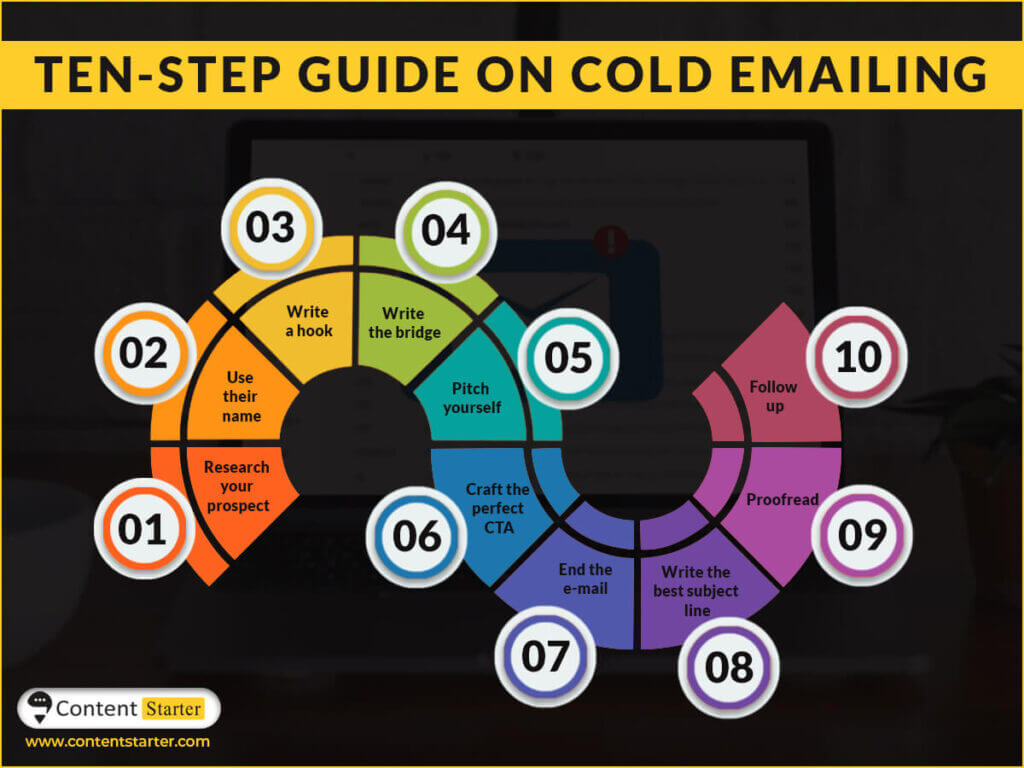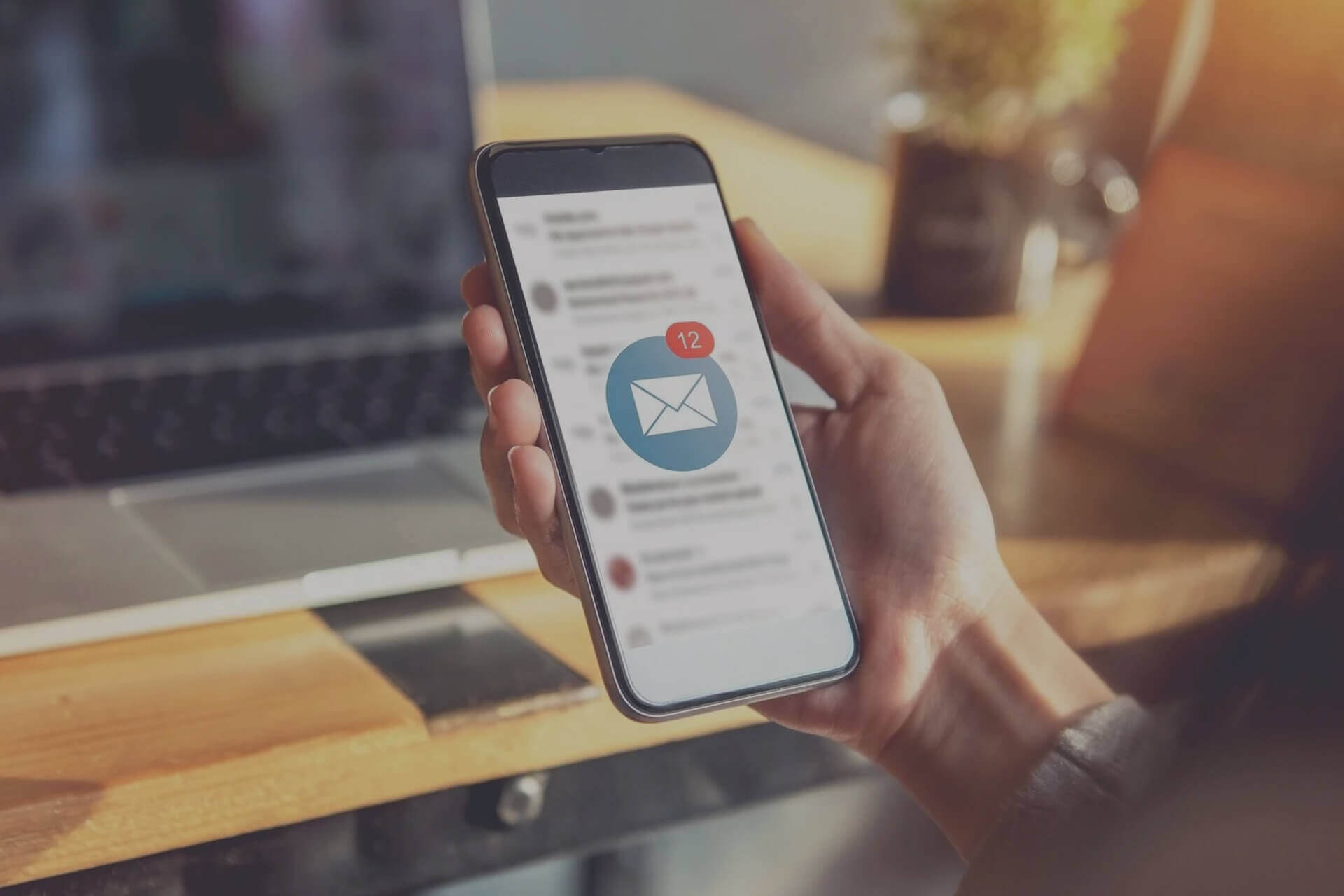10-Step Guide Of Cold Emailing
64% of small businesses use email marketing to reach customers.
Hubspot.com
As a freelance content writer, you operate as a small business. You handle aspects of a content writing small business at a much smaller scale. Thus, there are a thing or two you can learn from small businesses. One of them is using emails to acquire and convert paying customers. But there is a thin line between cold and spam emails, and understanding the difference is key to nailing email marketing.
Even though its easier to steal a format for writing email, we think its more effective to give a format as well as the reasoning for the format. Thus, we will spill our 10-step guide on how to cold email along with the cold email writing format. These steps will help you write emails with high chances of converting using a secret format of writing email that only a few know about, so let’s dive right into the blog without any delays.

Research your prospect before writing the email
The first step of emailing doesn’t start with writing but with researching your prospect. You first need to know the prospect’s accomplishments and use social media to find them. Suppose a famous magazine featured them, or they got an award. Their social media will also help you find their active email ID. LinkedIn is an appropriate social media platform to get their email ID; you can use email finders like Snov.io or Hunter to find their email ID.
Moreover, engaging with them on their social media a week or two before you send them an email will increase their chances of replying to you and warm them up a little. One little thing you might want to remember while doing your research is to stay away from their private life (you are not Joe from the Netflix series ‘You’). Keep your research strictly professional and have some boundaries.
Use their name to greet them
Remember the time you got an email with the greeting:
Dear Sir/Ma’am
It annoys us because all the person who sent the email had to do was use their common sense and the internet to find our name or preferred pronouns. But no, they had to use a general greeting and shoot a mass email. The first line can often stop people from even reading the first sentence. Thus, when greeting a person via email, use their name like:
Hello Gauri,
Yes, you can save time and avoid using their name with a simple hello. But personalizing your greeting will show sincerity and effort from your side and encourage people to read your email further. It will also increase their chances to reply to you. So always remember to use their name when writing a cold email.
The hook of the email writing format
After you have successfully made them proceed to the rest of your email, you need to hook their attention in the first line of your email. So, for the love of God, do not start with an introduction about yourself or some generic email lines. While the former will make you seem self-centric, the latter will bore them and click away. Thus, use the research from the first step to craft your hook line:
- If they win an award, you could congratulate them.
- If a popular magazine featured them, you could congratulate them
- If they recently wrote an article, you can agree with the points they made in the article.
- If they posted something on their social media, you could point how that helped you.
However, the first line should be related to the reason you are sending the email. Keep reading to understand why.
Write the bridge of the email
The bridge is crucial since it will connect the person reading the email to the person sending the email. So, if you have sent them an email about a post they made on their social media about the importance of acquiring customers, the bridge will be empathizing. So, something like:
I understand the importance of acquiring customers too, and an underrated path of acquiring them is content marketing. Many people ignore the importance of blogs and social media when thinking about expanding their customer base.
Thus, you have made a bridge between their opinions and your service as a content writer. It will make selling your services easier since they now can correlate your services and their business values. Let’s move on to the third step.
Pitch yourself and your services next
It is the perfect time to introduce yourself and your services. The prospect is curious enough to know more about you, so keep your introduction crisp and professional while also highlighting how your assistance has helped people in the past. If you have any notable results that make you seem a better content writer, mention them too. However, remember to keep this portion short and sweet too. 3-5 sentences can do the job well.
Craft the perfect CTA
Ditch the vague, ‘call me if you want to proceed further. Your CTA is key to converting the prospect. They want to work with you, but an unclear CTA can deter them from doing so. Instead of a vague CTA, ask them for a quick call of 15 minutes and mention the date and time. Also, ask them if they are available for the call or not and reschedule accordingly. A specific CTA states precisely what you want them to do will be the perfect way to convert them.
End the email
Since the email is in a professional context, end the email with a formal greeting. Do not forget to send the email a casual greeting since your prospects are potentially your future clients.
Spend time writing the best subject line
You wrote the perfect email, but the prospect never opened your email. Why? Because in the sea of email, your email didn’t stand out and thus got deleted. How to make the recipient read your email? By writing the best subject line.
The subject line should catch their attention, so try using an emoji. The emoji will break the monotony of plain text in their inbox and draw their attention. Next, the line itself should pique their curiosity or promise to help them in some way. Remember to keep your subject line relevant to your email. Else, it will just be clickbait and make you seem untrustworthy. Plus, keep the subject line below 60 characters since many people check their emails on their phones. You want your prospect to read the entire line, thus keeping it short.
Writing a subject line keeping all the above points in mind is hard, which is why you should take the time to write it. Spend time writing a subject line so that the prospect reads your email. And it would be best if you did it last is because you know the gist of the email and can thus write an effective line.
Proofread the email
Before hitting send, re-read your email to spot any errors or mistakes. Most of the time, we spot an error after we hit the send button and at that point, all you can do is scream internally. And that is not the best place to be in, but you can avoid all that agony by simply re-reading your email. After you have re-read the email and made corrections, it’s time to hit send and wait.
Follow up
Cold emailing requires persistence and effort from your side. Thus, if you receive no reply within 1-2 days, consider sending a follow-up email on the same thread. Maybe they didn’t check their inbox due to a busy schedule or an emergency. Thus, follow up thrice, and if they do not respond, you can officially assume that they do not want to work with you.
The follow-up email itself can be the lack of response from their side and telling them how content writing can help their business reach its goals.
Conclusion
Writing cold emails is an art and science, so we can help you give the guidelines and tips to write a cold email, but writing an email in concordance with the guideline depends on you. Plus, cold emailing is a process that takes time and effort. Since you are trying to convert people who don’t know you, you need to continuously send at least 20 emails a day for five days to gauge the success of the cold emailing. And since you need to customize each email, it will take you time to write each one, but the efforts are worth it since you are reaching out to companies you want to work for.
In the end, tweaking and experimenting with what works is your best bet to polish your cold emailing technique. So, this was the 9-step guide to cold email like a pro. We hope that it helped you write the perfect cold emails that convert your customers.
Follow us on Instagram, Facebook, Pinterest, and Twitter.
You may also like: 6-Steps To Find Freelance Content Writing Jobs On Social Media





